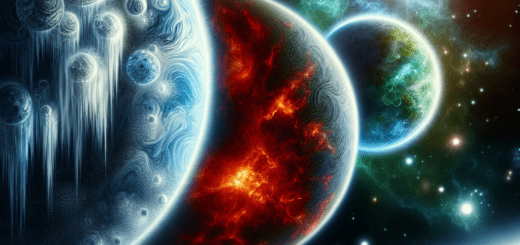Unveiling the Mysteries of Alien Planets: What We Know So Far
The universe is a vast and mysterious place, with billions of stars and planets scattered throughout its expanse. Among these countless worlds are alien planets, which have long captivated the imagination of scientists and stargazers alike. While much is still unknown about these distant worlds, recent advancements in technology and research have shed light on some of their mysteries.
One of the most exciting discoveries in recent years has been the detection of exoplanets, which are planets that orbit stars outside of our solar system. Thanks to the Kepler Space Telescope and other observational tools, astronomers have identified thousands of exoplanets in our galaxy alone. These alien worlds come in a variety of shapes and sizes, from giant gas giants to rocky planets similar to Earth.
One of the key questions that scientists are trying to answer is whether these exoplanets could potentially harbor life. While the search for extraterrestrial life remains ongoing, researchers have identified a number of exoplanets that are located within the habitable zone of their host stars. This means that these planets could have the right conditions for liquid water to exist on their surfaces, a crucial ingredient for life as we know it.
In addition to searching for signs of life on alien planets, scientists are also studying their atmospheres to learn more about their composition and potential habitability. By analyzing the light that passes through a planet’s atmosphere as it transits in front of its host star, researchers can determine the presence of gases such as oxygen, methane, and carbon dioxide. These observations can provide valuable insights into the planet’s surface conditions and whether it could support life.
Another key area of research is the study of planetary systems, which are groups of planets that orbit a common star. By studying the orbits and interactions of these planets, scientists can learn more about how planetary systems form and evolve over time. This information can help us better understand the diversity of exoplanets in our galaxy and how they compare to the planets in our own solar system.
While our understanding of alien planets is still in its early stages, the discoveries made so far have been nothing short of groundbreaking. From the detection of potentially habitable exoplanets to the study of planetary systems, scientists are making great strides in unraveling the mysteries of these distant worlds. As technology continues to advance and new observational tools come online, we can expect even more exciting discoveries in the years to come.
In the end, the study of alien planets offers a tantalizing glimpse into the vast diversity of worlds that exist beyond our own solar system. While there is still much to learn, the progress made so far has opened up new possibilities for exploration and discovery. As we continue to unveil the mysteries of alien planets, one thing is certain: the universe is a truly awe-inspiring place, full of wonders waiting to be discovered.













